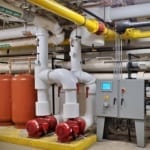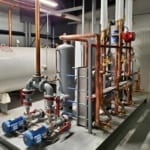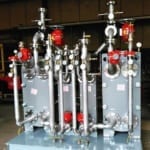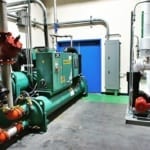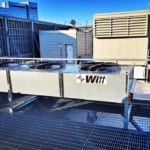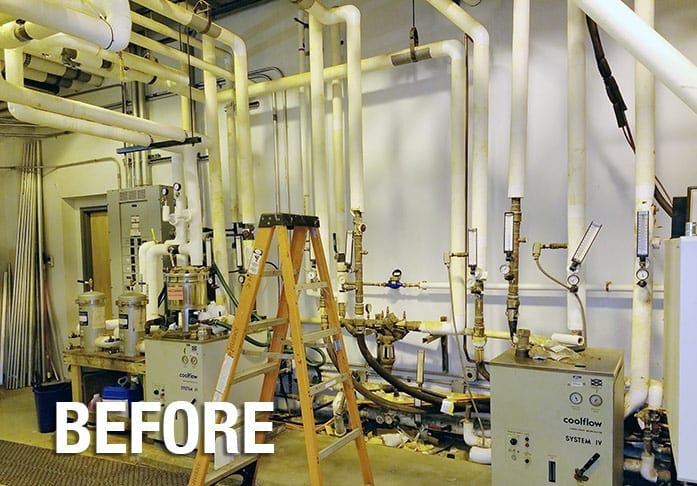
Happens all the time. We walk into a facility for an initial visit and see a proliferation of pumps—here, there, everywhere. Nothing drives us crazier, because the overuse of pumps is inefficient and expensive, and with a little forethought and creative thinking, completely unnecessary.
Here’s how to avoid creating a pump nightmare in your facility:
Pumps are used as a means to control fluid systems. Traditionally, more pumps are used than necessary because, like many old-school engineering approaches, “that’s the way it’s always been done.” The problem, of course, is that using a veritable pump farm in your facility adds significantly to the costs of installation, equipment, maintenance, and power consumption.
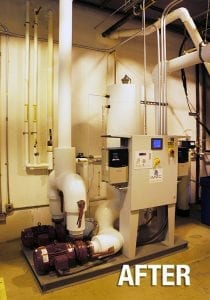 Instead of adding pumps, technological improvements such as competitively-priced VSDs, microprocessors, and digital controls, in combination with flow control valves, can easily manage fluid flow requirements. For example, a traditional primary and secondary pumping system can be replaced by one pump and a control system, producing the same or better results.
Instead of adding pumps, technological improvements such as competitively-priced VSDs, microprocessors, and digital controls, in combination with flow control valves, can easily manage fluid flow requirements. For example, a traditional primary and secondary pumping system can be replaced by one pump and a control system, producing the same or better results.
Here are specific illustrations of how much it can pay to be smart and fastidious about pump reduction:
At a manufacturing plant project involving several mechanical systems, our team reduced the number of pumps from 21 to 7, saving approximately $500,000 in installation expenses, and freeing up valuable space in the mechanical room.
At a plastics manufacturing facility, a creative solution for a redesigned chiller system utilized a custom-designed plate frame heat exchanger. The exchanger was designed with a close delta T and connected to a dedicated freon compressor. The result: eight of the nine pumps in the system were eliminated.
Another recent project involved the adjustment of the elevation of a condenser system with the goal of using gravity to flow condensate so that a pumping lift station could be completely eliminated.
By prioritizing the elimination of pumps, our team has devised creative ways to eliminate more than 1,000 pumps over the years, saving customers millions of dollars.
Remember, every single pumping horsepower running around the clock costs an average of $1,000 per year in power.
Join IMEC’s Mailing List
[ctct form="1828" show_title="false"]Complimentary Energy Efficiency Evaluation
SPECIAL OFFER
Learn about how our scientific approach to sustainable mechanical engineering will take your facility into a future of ultra efficiency.

Our engineers will dramatically improve your plant efficiency and help you take advantage of utility company rebates to cover a portion of the cost.
Through a combination of generous utility company rebates and IMEC’s high-efficiency engineering solutions, you’ll realize the benefits of streamlined mechanical systems that produce huge annual power savings.
We recently completed a project that is saving a customer over $1,100,000, annually.
Even if you don’t think you need a new mechanical system, it’s likely that we will discover a facet of your facility’s efficiency that can be improved dramatically. As an Authorized National Grid Project Expeditor, we also manage the utility rebate process for you.
Submit this form to receive your Complimentary Energy Consultation and Systems Evaluation:
- Plant walkthrough
- Identification of energy-saving projects
- Estimated ROI / Payback time
- Projected utility company rebates
An IMEC sales engineer will contact you to arrange a Complimentary Energy Consultation and Systems Evaluation.


